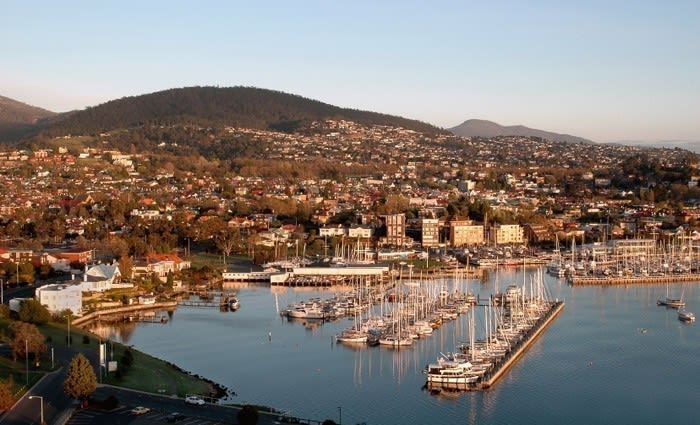Hobart first home buyers in recovery stage: QBE Housing Outlook
The expiry of Tasmania's first home buyer incentives for purchasers of established dwellings in 2014 saw first home buyer demand decline, according to QBE’s latest housing report.
First home buyer demand in the state has since bottomed out and is now in a recovery phase, the report said.
Loans to first home buyers increased by an annual 6% in 2015/16 and the rising trend has been accelerating, with loans to first home buyers in June quarter 2016 being 24% higher than the same period a year earlier.
It is likely that some of this demand stems from increased interstate migration. In contrast, purchase activity by upgraders and downsizers has been easing, with loans to non–first home buyers having fallen by 4% in 2015/16.
Demand from investors has also been decreasing, with the total value of loans to investors having fallen by an annual 13% in 2015/16. As with the other states, tightened lending policy by the banks is containing investor demand, although the decline in 2015/16 has been lower than the national decline.
Rental growth has been largely flat and vacancy rates are close to balance at just under 3% through 2015/16.
House prices in Hobart were flat in 2014/15, but picked up in 2015/16, with the median house price increasing by 5.2%. Tasmania’s net interstate migration outflow has been steadily declining since peaking in 2011/12, and interstate migration is on track to record a net inflow in 2015/16.
Part of the driver of this recovery is likely to be increased “tree changers” downsizing from the more expensive mainland capitals, while there are also likely to be many returnees from the mining states who contributed to the higher net interstate migration outflows of recent years.
House price growth has been unevenly spread across the Local Government Areas of Hobart. Median house price growth has been particularly strong in Hobart (10.1%), Clarence (8.4%) and Kingborough (6.9%). Glenorchy (1.1%) and Brighton (2.8%) saw more moderate house price growth while Sorell (–3.3%) experienced a decline in its median house price. The overall Greater Hobart median grew 5.2% over 2015/16.
The Tasmanian economy has been weak in recent years. A high Australian dollar and slow population growth have added to general economic weakness. However, improved household spending, non–residential building activity and improving exports suggest a stronger economic recovery.
The weakening Australian dollar should support growth in tourism while the agricultural and mining industries should also benefit. The state unemployment rate fell from 7.8% at March 2014 to 6.6% at March 2016. Greater Hobart has a lower unemployment rate than the rest of the state, having fallen from 6.7% to 6.1% over the same period.
Greater Hobart has also been the main destination for migrants from overseas, interstate and the rest of Tasmania, with its population rising by 0.8% in 2014/15 while the population of the rest of Tasmania was flat.
On the supply side, completions at the state level have continued to rise while underlying demand has been slow. This has seen Tasmania’s dwelling surplus climb from 4,800 dwellings to an estimated 5,300 dwellings at June 2016. Given the disparity between population growth, it is likely that the oversupply is greater in regional Tasmania.
Reflecting lower income levels and fewer drivers of employment, Hobart has the lowest median house price compared to the other state capitals. Its relative affordability compared to other capital cities is a significant driver of demand as interstate migrants seek a more affordable market.
The current low interest rate environment is expected to improve affordability and spur purchaser demand, the QBE report said. Poor affordability in Melbourne and Sydney is expected to fuel further migration to Tasmanian cities, a trend already evident with the net interstate inflow forecast to increase further to 1,000 persons in 2016/17 and 2017/18.
Click to open chart in new window

Overall, the gradual recovery in the local economy and interstate migration is expected to underpin price growth, while the presence of an excess dwelling stock at the state level will likely limit price growth to more moderate levels. Hobart’s median house price is forecast to rise from $377,900 at June 2016 to $425,000 by June 2019, reflecting growth of around 4% per annum or a cumulative 12.5%.
With a significantly smaller unit market, and thus a smaller sample of sales volumes to measure the median, movement in the median unit price in Hobart can be much more volatile from quarter to quarter. Overall, however, median unit prices have been in a gradual decline since its peak median price of $420,000 in June 2011.
With falling investor demand, the unit market could experience the greatest impact as investor purchasers have traditionally been more prevalent buying units.
This softness is expected to continue to dampen demand, limiting median unit price growth to a forecast 1%–2% per annum through to 2018/19. This is forecast by QBE to push the median unit price to $315,000 at June 2019; a cumulative growth of 4.5% over the forecast period.

